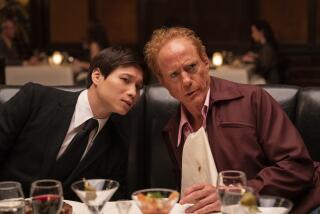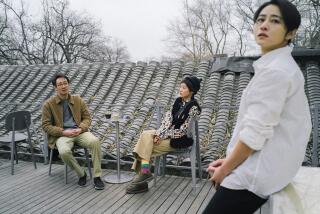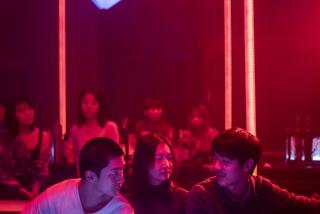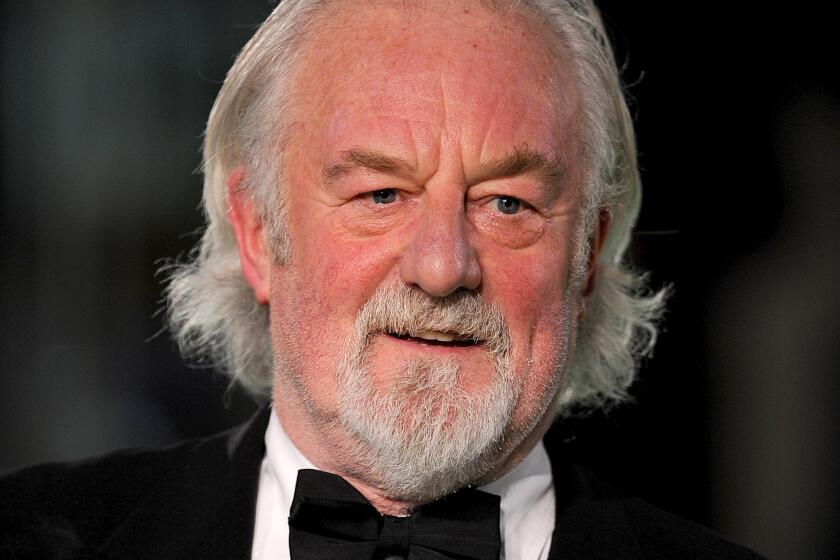Struggles of ‘City of Life and Death’
Among the most painful chapters in modern Chinese history is Japan’s 1937 invasion of Nanjing. Hundreds of thousands were killed, countless women were raped, and soldiers and civilians alike suffered unspeakable brutalities. So when Chinese writer-director Lu Chuan set out to make a movie about the siege of the city, he had a notion of how the story would go.
“In the beginning I was just going to make a traditional movie, with a single plot and one hero,” said Lu. “I received a historical education in China, so at first I believed all these Japanese soldiers were beasts.”
Yet once he immersed himself in research, reading letters and diaries from the period and even traveling to Japan, a different film began to emerge in his imagination.
“Doing the research, step by step I would change my mind. I changed my mind because the Japanese soldiers were also human beings,” he said. “I found I had misunderstood the history. The Nanjing massacre is not only in the memory of Chinese people and Japanese people, it should be in the memory and lessons of all human beings. So I wanted to make a movie not only about the Nanjing massacre, a story between Chinese and Japanese, I wanted to make a movie which can touch the heart of any audience.”
The result was “City of Life and Death,” which opens in Los Angeles on Friday and brings the events to disturbingly vivid life not from one perspective, but from many.
The film plunges the viewer immediately into the action, giving consideration to Chinese soldiers and civilians, Japanese soldiers and their officers, international aid workers, women, children and others swept up in the violent chaos of the invasion. Characters and story lines slowly emerge from the swirl of events.
“It’s a very important point, for me, that makes me think, I am myself a human being. Someday if I were on the battlefield, I might do something similar to those Japanese soldiers,” said Lu, 40, speaking in English from the set of his next film in Zhejiang province in eastern China. “So I wanted to make a movie to show how a common person becomes a killer, or how a person suffers in battle.”
Due to the sensitive nature of the material, Lu’s insistence on a sense of multiple points of view and the film’s jarring brutality, it took some six months for the film to be approved by Chinese government censors, and faced another delay after that.
When “City of Life and Death” was finally released in China in April 2009, it was an immediate hit, taking in more than $25 million. But the film also touched off anger and Lu himself received death threats.
“To be honest with you I didn’t expect that I was making a controversial movie,” said Lu. “I think I felt I was doing something right. I couldn’t imagine it as a controversial movie. And I was totally shocked that when the movie was released in China it aroused so much hatred against me.”
There were more politics involved in getting the film into U.S. theaters: It screened at the Toronto International Film Festival in fall 2009 and won best picture at the 2009 San Sebastian Film Festival. Soon thereafter, it was to be released in the United States. But then the film was suddenly pulled from the 2010 Palm Springs International Film Festival because Chinese officials were upset the festival was also showing a documentary on the Dalai Lama, a movie China objected to. Plans for a commercial booking of “City of Life and Death” in New York City also fell apart.
“I’m hoping all this stuff’s going to go away essentially when the movie opens,” said Gary Palmucci, vice president of distribution at Kino Lorber Inc., which is releasing “City of Life and Death” in the U.S. “I’m worried about other things connected to the film. The back story from two years ago is of less concern to me. It’s a tough film to get into the marketplace and that’s been my main focus.”
The making of “City” which reportedly cost between $12 million and $13 million, a substantial budget for a Chinese film would become something of an epic adventure unto itself. Six months were spent constructing the outdoor set so that Lu and cinematographer Cao Yu working with color film desaturated to rich black and white in post-production could shoot with total freedom in and around their mock-up of the city. Some 30,000 extras would cycle through the production over the course of a 253-day shoot, with upward of 2,000 extras in a single scene. Post-production took nine months.
“I was surprised as much ended up on the screen as actually did,” said Stanley Rosen, director of the East Asian Studies Center at USC and co-editor of the book “Art, Politics and Commerce in Chinese Cinema.”
“One of the key things about censoring of films in China is how does the film end,” added Rosen. “A film like ‘The Blue Kite,’ which has been banned and the director Tian Zhuangzhuang was banned from filmmaking for about 10 years, that film ends completely, unremittingly bleak. Whereas a movie like Zhang Yimou’s ‘To Live’ ends with hope. And ‘City of Life and Death’ ends with hope. That’s a key to getting censorship approval in China, what is the end of the film and does it show something positive or not.”
The stories in the film are based in fact, though many of Lu’s characters are composites. Though Lu wanted the film to feel real, he also included a sequence of the conquering Japanese in the streets that is part ceremony, part parade, part dance number. (It required choreography for more than 1,000 extras.)
(Page 2 of 2)Struggles of ‘City of Life and Death’Lu Chuan’s film about the 1937 Japanese invasion of Nanjing, which touched off controversy in China, finally comes to Los Angeles.June 14, 2011|By Mark Olsen, Special to the Los Angeles Times
“One of the key things about censoring of films in China is how does the film end,” added Rosen. “A film like ‘The Blue Kite,’ which has been banned and the director Tian Zhuangzhuang was banned from filmmaking for about 10 years, that film ends completely, unremittingly bleak. Whereas a movie like Zhang Yimou’s ‘To Live’ ends with hope. And ‘City of Life and Death’ ends with hope. That’s a key to getting censorship approval in China, what is the end of the film and does it show something positive or not.”
The stories in the film are based in fact, though many of Lu’s characters are composites. Though Lu wanted the film to feel real, he also included a sequence of the conquering Japanese in the streets that is part ceremony, part parade, part dance number. (It required choreography for more than 1,000 extras.)Ads by Google
David Fincher’s New FilmThe Girl With the Dragon Tattoo Read The Book, Then See the Movie www.stieglarsson.net
The sequence in part makes physical the emotional exhaustion, moral confusion and ecstatic tumult felt by even the conflict’s relative victors. Perhaps appropriately, it came to Lu in a dream.
“That was the motivation that pushed me to finish the film,” Lu said of the sequence. “Before I shot the movie, I had spent a long day in front of my computer polishing the script and I went to bed and I had this dream of Japanese soldiers dancing. Very simple but very shocking, dancing in the ruins of the city. I woke up and felt I should put it in the movie.”
With the long journey to simply get “City of Life and Death” into American theaters finally reaching its end, the film is dividing critics here just as it did in China. The New Yorker’s Richard Brody decried it as a “vulgarization” of the events in Nanjing, while Manohla Dargis in the New York Times hailed Lu as an “extraordinary visual artist.”
Lu noted that the U.S. rollout has renewed interest in the film in China, with many of his Twitter followers and blog commenters mentioning they are watching the movie again or even for the first time.
Palmucci likened the film to something like John Woo’s 1989 feature “The Killer,” which is now revered as a classic but initially struggled to find an audience.
“These movies are never going to have an easy time because they fall somewhere in between,” Palmucci said. “They have commercial elements but the chances of attracting commercial audiences are usually slim. And the violence makes them a little tough for the older audiences that primarily gravitate to the art house circuit. A [‘Crouching Tiger, Hidden Dragon’] is really the exception that proves the rule.”
More to Read
The biggest entertainment stories
Get our big stories about Hollywood, film, television, music, arts, culture and more right in your inbox as soon as they publish.
You may occasionally receive promotional content from the Los Angeles Times.







